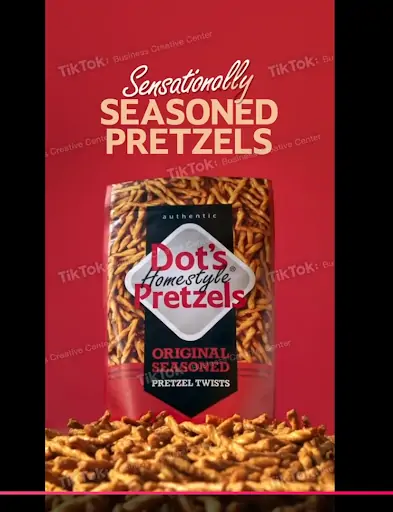
6 Powerful Ways Silent Ads Are Winning the Attention Game in a Soundless World
In today’s world, sound has become optional—and, in many cases, it’s no longer necessary. Silent ads are proving that visuals alone can speak louder than words. As Leo Burnett famously said, “Good advertising does not just circulate information. It penetrates the public mind with desires and belief.” Silent ads are doing just that—capturing attention, sparking emotion, and telling stories through powerful, thought-provoking imagery alone.
In our increasingly visual digital landscape, sound is gradually being sidelined in the race for attention. A recent study from Bluetext reveals that 85% of Facebook users watch videos without sound. This behavioral shift is forcing brands to rethink their strategies. Silent ads are rising to the challenge, with striking visuals, captivating text, and creative animations taking center stage.
So, how do you grab an audience’s attention when sound—the tool that most ads rely on—has become optional, or even disruptive? It’s all about adapting to this new reality where silence is not just tolerated but embraced. Let’s dive into how brands are succeeding in a mute-first world, and why silent ads might just be the future of advertising.
It’s no longer enough to rely on a catchy jingle or a voiceover to explain the message
Think about Instagram’s silent autoplay feature—ads are automatically muted as users scroll through their feed. This challenge has pushed advertisers to craft content that speaks directly through images, text, and animated visuals without relying on sound. Brands now must use more compelling visuals, clever text overlays, and creative animations to ensure the message is understood even in the absence of sound.
For example—when viewing a silent ad on a platform like Instagram or TikTok, you’ll notice more and more that brands use captions or clever text to convey the message clearly. Whether it’s the subtlety of a brand’s logo in the corner or a text message on screen, the key is for the viewer to immediately understand the purpose of the ad without having to unmute.

How about getting creative with data-driven design
According to a recent report by eMarketer, 67% of users watch online videos with the sound off. This shift in behavior has forced marketers to rethink their strategies when it comes to silent ads. Now, the focus is on ensuring that the content is just as compelling without the need for sound. Data has played a crucial role in how ads are designed to accommodate this trend.
Using user data, brands can understand not only where their ads are being viewed but also how they’re being consumed. This information helps optimize ads for silent engagement. For instance, if users tend to engage more with visuals that incorporate large, easy-to-read text or minimalistic imagery, brands will tailor their ads to align with these preferences.
A key component of this strategy is motion graphics. Studies have shown that moving visuals capture attention in a way that static images cannot. By using dynamic, engaging animations, advertisers can effectively communicate their message without needing any sound at all.

Impact of subtitles and text overlays
Subtitles are no longer just for movies and TV shows. With silent ads becoming more prevalent, text overlays have become a crucial tool in making ads comprehensible. By placing text on-screen, brands are ensuring that even without sound, viewers can follow the narrative.
The best silent ads don’t just include basic text; they use creative fonts, colors, and placement to enhance the overall experience. The text itself becomes a character in the ad. It’s not just about reading—it’s about how the text feels, its movement, and how it interacts with the visuals.
Subtitles and text-based communication allow for a more inclusive experience, too. Ads become accessible to people who may have hearing impairments or who are simply watching in noisy environments where the sound can’t be played.
For example, let’s take the Squatty Potty ad. Without any sound, the ad still captures your attention and keeps you watching. The combination of quirky visuals, text overlays, and humor makes the message clear, even when muted. Whether it’s the subtlety of the brand’s logo in the corner or a bold, on-screen text message, the goal is to make sure the viewer understands the ad’s purpose without needing to hit unmute. The key to success in this mute-first world is creating a story that unfolds visually, making every frame count.
Incorporating Sound Design in a Non-Intrusive Way
While the focus of these ads may be visual, the idea of completely removing sound isn’t always ideal. Some ads still benefit from a carefully designed soundtrack that complements the visuals but doesn’t dominate the experience.
For instance, brands are experimenting with soft background music that can be felt more than heard. These ads aim to create an atmosphere or evoke emotions through the rhythm of the visuals, leaving sound as a subtle enhancement rather than the focal point.
Think about the trend of ASMR (Autonomous Sensory Meridian Response). Brands are tapping into ASMR’s power to create a sound-driven yet visually captivating experience. Imagine a silent ad for a skincare brand where the visuals are complemented by soothing sounds—things like the rustle of a towel or the subtle splash of water—which can be felt through the overall vibe of the ad rather than heard directly.
Shift to Social Media Platforms and Video Content
With video content dominating social media platforms like TikTok, Instagram, and YouTube, silent ads have become more common. However, these platforms have also provided innovative ways to optimize silent ads.
Take TikTok, for example. Its vertical video format, short video length, and autoplay feature demand that brands create ads that immediately catch attention, even without sound. On TikTok, captions aren’t just useful—they’re necessary. As more people scroll through the app while on mute, a well-crafted caption or text overlay ensures the message isn’t missed.
Additionally, the use of stop-motion animation or cinematic visuals in these silent ads ensures that viewers stop and engage. Whether it’s the smooth transition of text or the fluidity of motion, these visual elements create a sense of urgency and intrigue.
Optimizing Ads for the Mute-First Generation
It’s important to remember that silent ads are not just a trend for social media. The mute-first generation refers to how modern users interact with all kinds of media—not just video. This shift means that advertisers need to optimize their campaigns for mobile users who are likely to consume content on mute, whether in transit, in public spaces, or even at home when they simply don’t want to be disturbed.
For instance, on platforms like YouTube, the user has control over the sound, but they also have the ability to scroll past an ad if it doesn’t grab their attention immediately. That’s where the power of visual storytelling, strong branding, and clear messaging comes into play. In a world where 60% of YouTube users watch videos without sound, the pressure to make an impact visually is greater than ever.
Cut the chase
As consumer behavior continues to evolve, it’s clear that silent ads will be a permanent fixture in the advertising landscape. So, the next time you find yourself scrolling through an Instagram feed or watching a YouTube video, remember it’s the silent, visual storytelling that’s truly leading the charge in the mute-first world.


